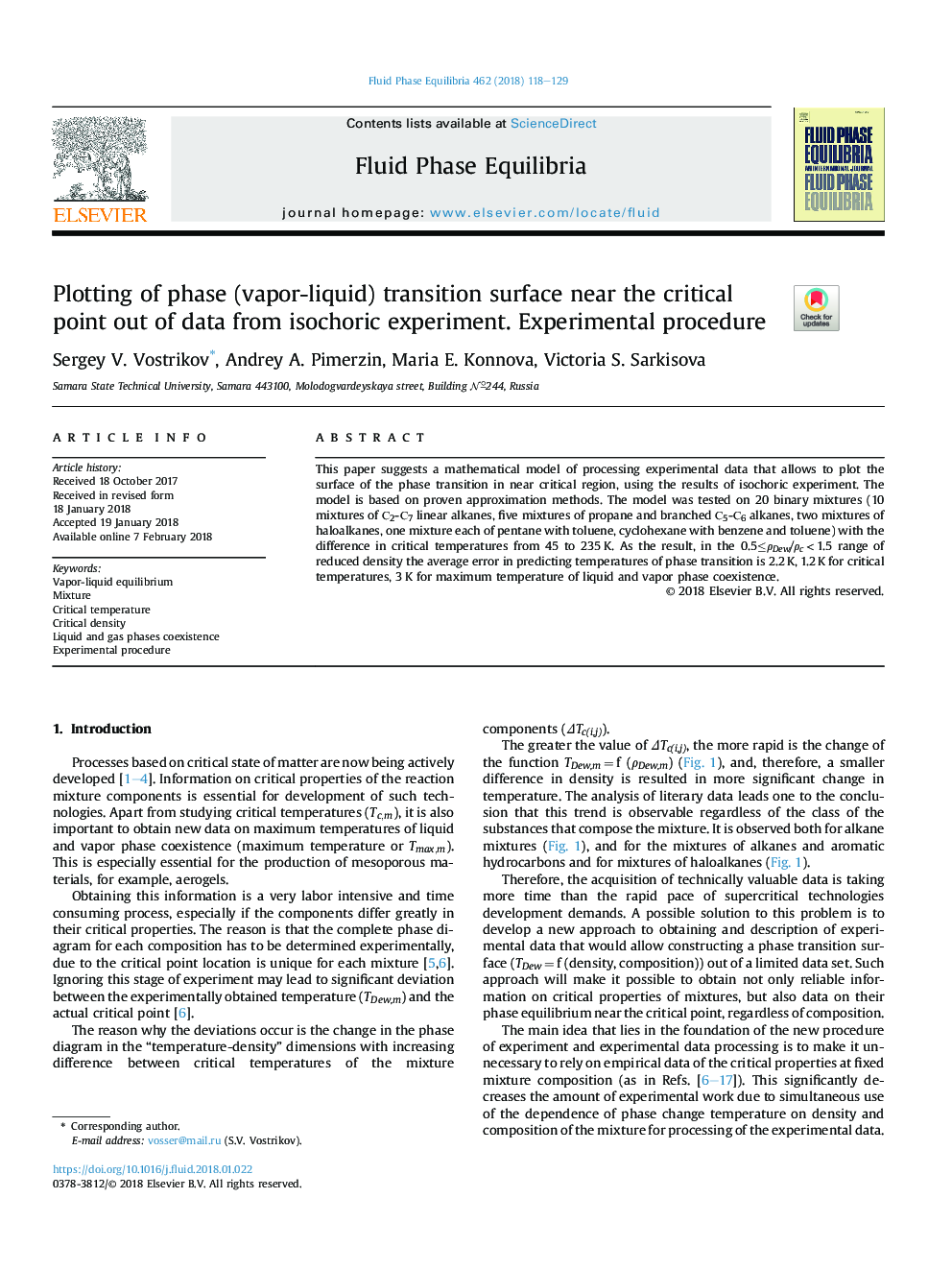| Article ID | Journal | Published Year | Pages | File Type |
|---|---|---|---|---|
| 6619266 | Fluid Phase Equilibria | 2018 | 12 Pages |
Abstract
This paper suggests a mathematical model of processing experimental data that allows to plot the surface of the phase transition in near critical region, using the results of isochoric experiment. The model is based on proven approximation methods. The model was tested on 20 binary mixtures (10 mixtures of С2-С7 linear alkanes, five mixtures of propane and branched С5-С6 alkanes, two mixtures of haloalkanes, one mixture each of pentane with toluene, cyclohexane with benzene and toluene) with the difference in critical temperatures from 45 to 235â¯K. As the result, in the 0.5â¤ÏDew/Ïcâ¯<â¯1.5 range of reduced density the average error in predicting temperatures of phase transition is 2.2â¯K, 1.2â¯K for critical temperatures, 3â¯K for maximum temperature of liquid and vapor phase coexistence.
Related Topics
Physical Sciences and Engineering
Chemical Engineering
Chemical Engineering (General)
Authors
Sergey V. Vostrikov, Andrey A. Pimerzin, Maria E. Konnova, Victoria S. Sarkisova,
